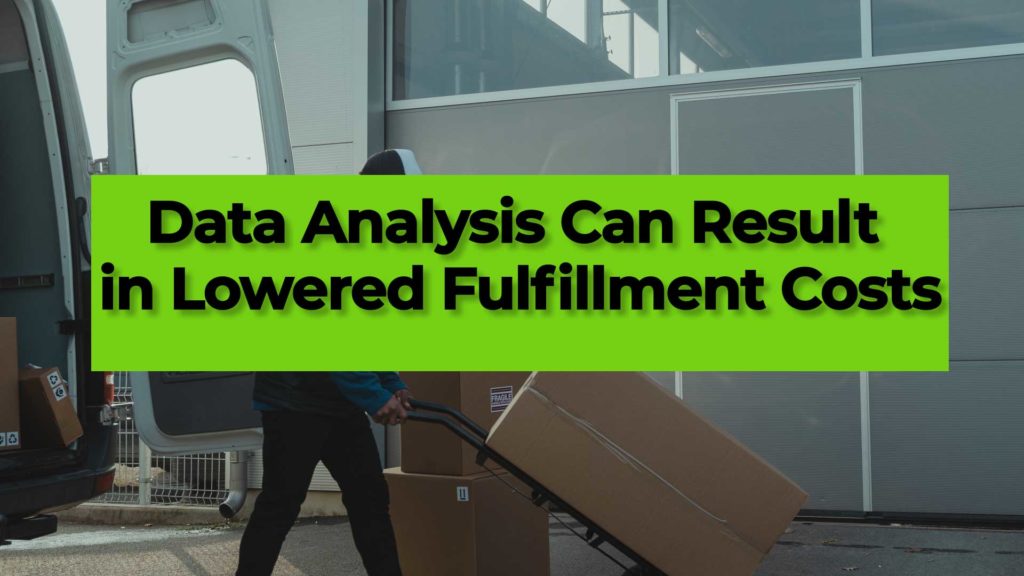Big Data is a hot topic within the supply chain and logistics industry. With industry participants both small and large investments in technology to better leverage big data to increase operational efficiency, lower costs, and increase asset utilization.
The major logistics companies have been collecting data for years, but only recently have they truly started to unlock the potential that all these data points can provide.
Just taking a look at UPS or FedEx for example, every time a package is scanned, or a vehicle departs, that data is collected. This generates a massive quantity of data tracking the flow of each package the company moves as it scans each package many times throughout its trip to its final destination.
Leveraging this huge quantity of data in an accessible format to provide needed insights is a challenge, but provides a clear competitive advantage to the firms that make the best operational and asset allocation decisions.
UPS in a recent interview talked about its approach and how important it is to incorporate big data to solve global supply chain problems sayings “supply chains are going to have to become even more nimble, more flexible than ever before, and you really can’t achieve that without data.”
A huge ongoing challenge for any final mile delivery operation is to optimize the delivery trucks’ routes. Here is another major focus of UPS’s big data utilization ”The problem that we solve every single day to just simply optimize one route, it’s one of the most complex problems to solve, but we do it every single day. And now today we do all that analysis and all those optimizations before the drivers leave our facilities. Then we download a manifest onto their handheld device that tells, in essence, to the driver what is the best way to deliver that route. That’s what we do today.
In the future, which is next year, we will be doing all those optimizations dynamically, which means that, as the driver is making deliveries throughout the day, he or she will be presented with enhancements, improvements to the route so that the driver can become more efficient, continue to make all of our service commitments to our customers, and continue to be more sustainable.”
Many players within the supply chain and logistics industry are following the lead that UPS and other major firms are taking. Even smaller domestic cross-country trucking companies and railroad intermodal freight providers are starting to leverage the benefits that big data can provide. Supply chains of all types will continue to be more and more focused on optimization and data drive lean decision making.
Technology is truly starting to transform the logistics industry in general, as up until recently the technology adoption within the logistics industry lagged behind many others relying heavily on faxes, old FTP file systems, manual data entry and vast numbers of emails and phone calls to coordinate movement.
Tech startups and industry incumbents alike are realizing the potential disruption and competitive advantages that better tech enables and are working hard to reduce their tech lag. Data analytics along with big data are key components of this technology investment, as even small percentage gains in efficiency can be huge amount of money in a trillion dollar industry. The ultimate goal for many firms is near-automatic decision making from big data analytics with machine learning and API connectivity between partnering companies to allow for seamless execution of freight movements.
Amazon is also using extensive data analytics to make predictive decisions regarding inventory demand, warehouse location planning and inbound logistics. Planning inventory management needs for the near 200 fulfillment centers globally is a huge task, with significant costs involved.
In addition to inventory management, Amazon also owns a considerable number of its own transportation assets including trucks, planes, containers and boxes. Over time Amazon will continue to deploy more advanced technologies into its supply chain including electric vehicles and more advanced robotics at fulfillment centers.
Data Analytics throughout the Supply Chain
Data analytics are carried out at many points within a supply chain, often well before the goods are even made, with purchasing data driving decisions on how much product to make, when to make it, and how to decrease production costs based on demand planning.
Supplier risk evaluation is also a critical component of supply chain analytics well before products have been shipped. Collecting and reviewing past data from suppliers can provide a great means of analyzing whether supplier risk is concentrated too greatly with one or two suppliers. Post the pandemic- supply chain risk and resilience is an important aspect of greater supply chain planning, with more firms wanting to avoid relying on a sole supplier for a source of raw materials or product inventory.

Reverse Logistics Supply Chain Analytics
Supply chain analysis doesn’t stop with the delivery of products. Returns are an unfortunate fact of life regardless of industry, and the increased reliance on e-commerce as a distribution model means that more and more returns are to be expected. Returns are often forecasted around 8-25% of the total number of units sold. These returns can quickly become costly for the seller, as reverse logistics, often parcel-based, are expensive.
Planning a proper return process and strategy can make a large difference on the bottom line profitability for an e-commerce supply chain. This includes thinking through how to sort and inspect the inventory once it is returned, working with parcel carriers on discount rates, and building an easy workflow for customers to follow when they do want to make returns. At first glance, you might think it’s better to make it harder for consumers to return items, but developing a long-term relationship with customers is important to increase repeat customers and building positive reviews.
Routing Guides and Mode Selection
With the rapid rises in freight rates and overall strong volatility within supply chains, long-term freight bids shouldn’t be relied upon as heavily as they were in previous years since the bid rates simply won’t be accurate and logistics vendors will return loads as the market changes.
A much more valid strategy that will result in a more reliable transportation plan would be to hedge transportation demand between the spot and contract markets. Consider also using 3 month mini bids in place of long-term contracts – these bids will more accurately reflect true market prices and allow logistics vendors to execute on your plan vs returning loads due to price increases. Rates are extremely high right now as well, it’s possible that the market over the year could soften, which would mean you’d be paying over market rates if you signed a large freight contract.
Collecting as much data as possible on historic lane pricing and needed capacity lets you better negotiate with logistics partners and carriers, as you can provide them more accurate volume counts.
Mode selection and diversification is an important tool as well to lower costs and increase supply chain reliability. Using transportation big data analysis, you can track historical costs on longer lanes and consider shifting 50-70% of long haul non-time-sensitive freight to domestic door-to-door intermodal on lanes longer than 500 miles. This will have the effect of not only lowering costs by 10-25% per load but also act as an extra source of supply chain capacity, keeping freight moving, when trucks might be scarce on certain lanes.
Smart Devices within the Supply Chain
As costs decrease for data connectivity, wifi-connected devices, and GPS based systems, more and more assets are receiving sensors or tracking equipment, which is in effect increasing the amount of data collected within a supply chain and a number of points within a supply chain that is able to collect data. Prior, there were more “dark spots” within a supply chain, where data recording and location were simply unavailable, but as the number of connected devices increases, the amount of time that supply chain assets are able to be monitored increases.
This means that problems can be detected earlier than before, while also providing data that tells a more complete picture of the supply chain, helping to refine processes to a more granular level of detail.
Check out these links for a deeper dive:
https://www.techrepublic.com/article/at-ups-big-data-is-redefining-the-supply-chain/
Zmodal is a top intermodal shipping company providing door-to-door intermodal, and full truckload services nationwide throughout our digital supply chain dashboard which provides easy route searching, booking, document management, and analytics. CONTACT US if you want to lower your supply chain costs or want access to North American intermodal capacity.



